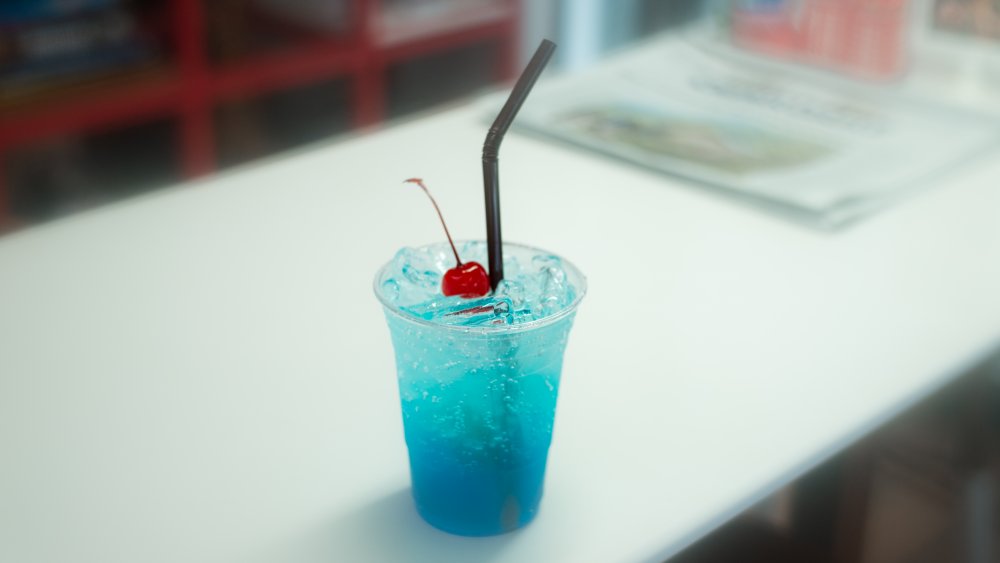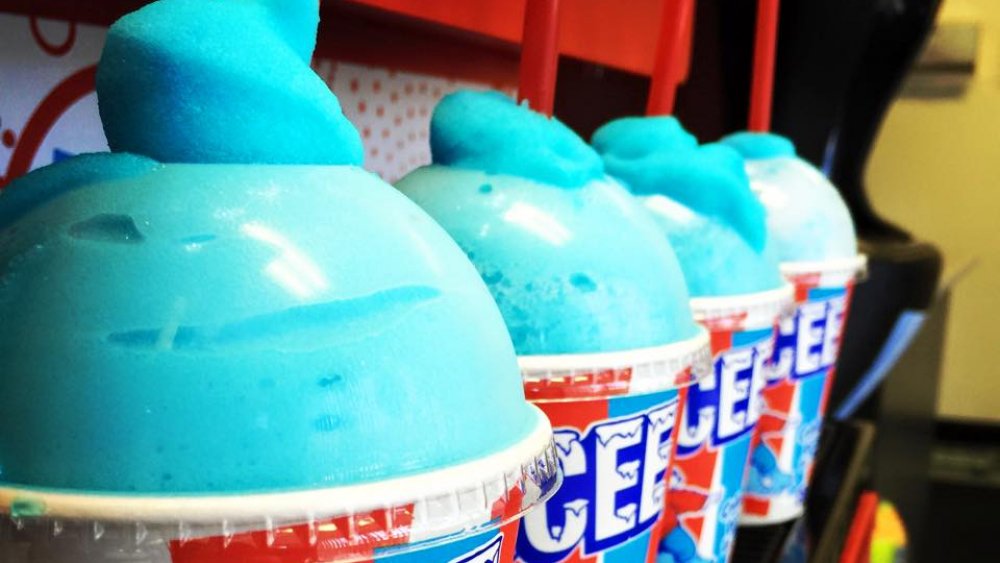What Is Blue Raspberry Flavor Really?
Blue raspberry is such a hard-to-pin-down flavor. When asked to describe it, what comes to mind first is that it's an eye-catching (yet definitely not to be found in nature) color, somewhat reminiscent of windshield wiper fluid, although much tastier. As to this taste, though — well, blue raspberry does not really taste much like raspberries, or even raspberry flavoring. So just what is blue raspberry flavor supposed to be, anyway? Blueberry? Nah. Blackberry? Not that, either. Perhaps some weird kind of hybrid like "wildberry" or "razzleberry"? Closer, maybe.
Surprisingly, there is an actual fruit that blue raspberry flavoring is meant to emulate (unlike blue strawberries, which are totally not a thing). According to Spoon University, there's a fruit called the white bark raspberry (Rubus leucodermis, if you're a stickler for both genus and species). Interestingly, the berry is not blue — nor is it white. It's actually more like a kind of purple. But its slightly-tarter-than-raspberry flavor was the one selected to embody the electric blue color that, in this case, predates the flavor for which it's so well known.
How blue raspberry came to be
It all started with the ICEE. ICEEs, that slushy frozen treat invented by accident (like so many other of our favorite foods were) in the '50s, used to come in just cherry flavor. In 1970, some marketing genius thought, hey, let's do one in blue. Instead of blueberry, they chose to go with a raspberry flavor, coloring it with the food dye Blue No. 1. This made a nice, and even patriotic, contrast with the cherry ICEE, which was obviously red.
At the same time, popsicle companies like Fla-Vor-Ice and Otter Pops featured a range of flavors such as cherry, strawberry, watermelon, and raspberry, but this was a rather monochromatic palette — red, red, red, and red. Slightly differing shades of red, of course, so people could tell the flavors apart, but still a whole lot of red food dye.
In 1976, though, the Food and Drug Administration let it be known that Red No. 2 — the darkish red hue most often used for raspberry flavoring — was actually quite dangerous to consume (as are many other food dyes, according to subsequent findings). Manufacturers looking around for a safer alternative latched onto the Blue No. 1 that had been working so well for ICEEs, and decided, why not make this our new raspberry? Over time, though, they decided that such a distinctive color deserved its very own flavor variant, and somehow the obscure white bark raspberry got chosen as the taste behind this enduring food-flavoring mystery, and it now appears in tons of different products, from 7-Eleven Slurpees to lollipops and even Pop-Tarts.
So now you know — everybody's favorite tongue-staining fruit flavor isn't quite as fake as we thought.

